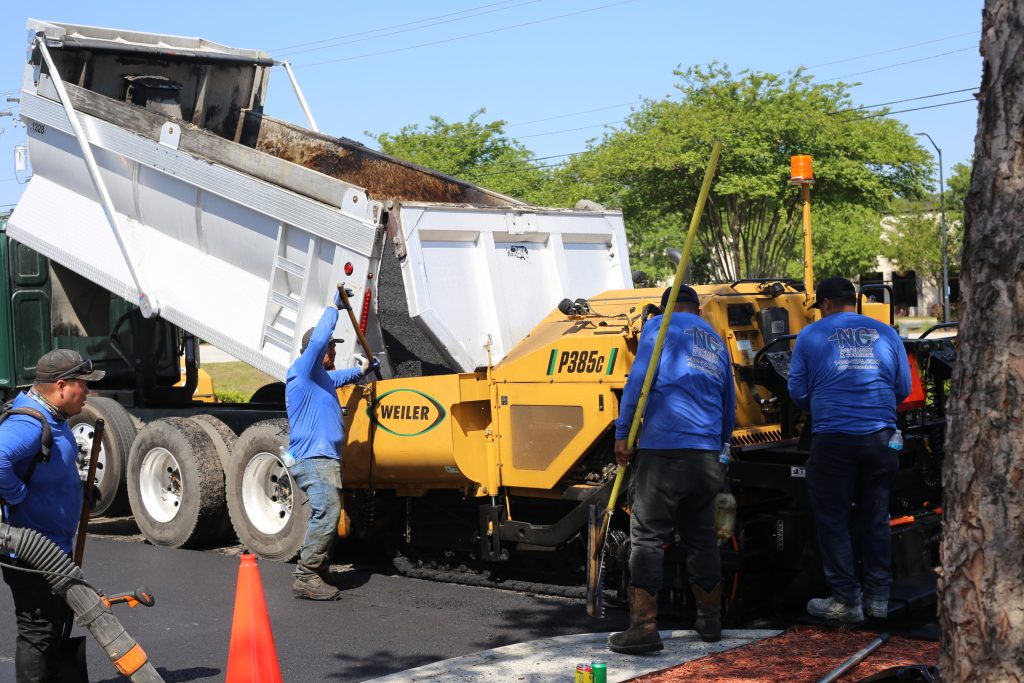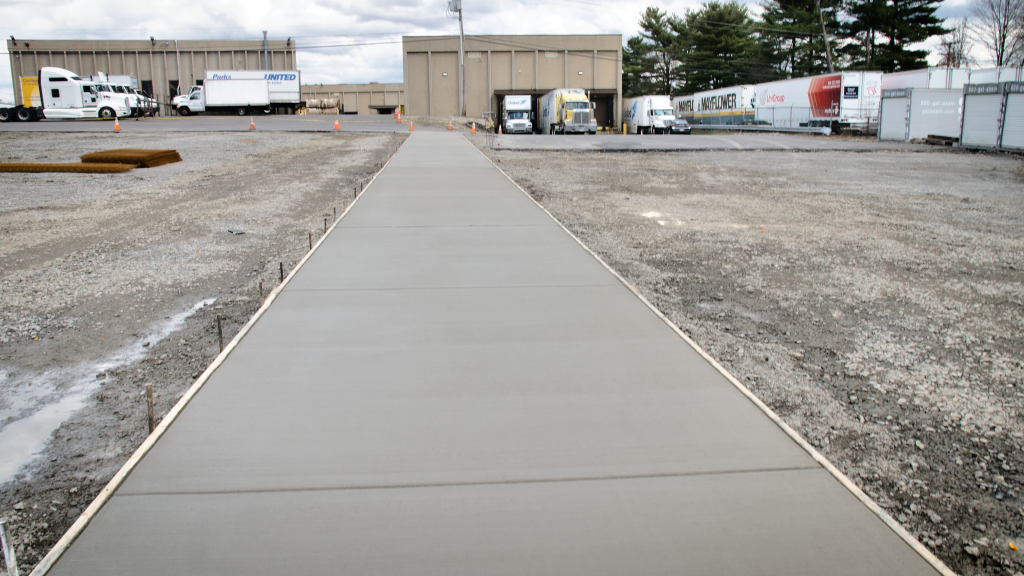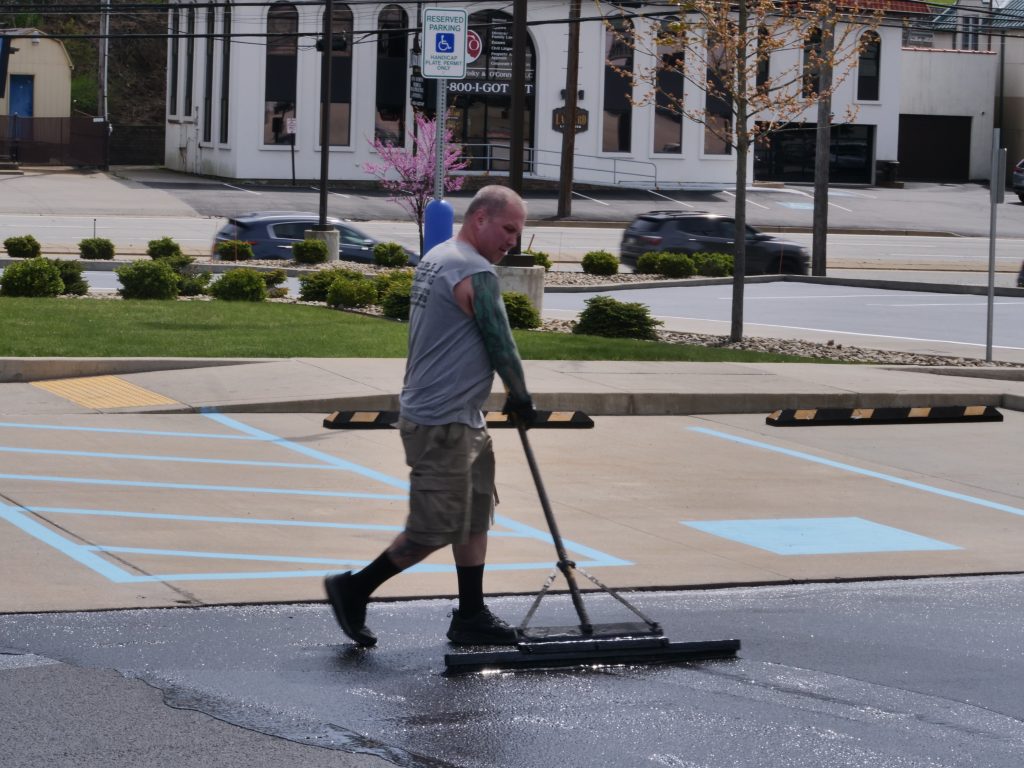Common pavement hazards in retail not only look unprofessional but also create serious safety risks. For retail businesses, maintaining smooth and safe pavement is essential for customer experience and liability protection.
That’s where The Pavement Group comes in. With years of experience handling commercial paving across the country, they understand how proper pavement maintenance keeps your property looking sharp and your customers safe.
The Importance of Pavement Safety in Retail Spaces
Retail spaces see heavy daily traffic. Cars, delivery trucks, and pedestrians all use the same paved areas. Over time, constant use, weather exposure, and poor drainage cause deterioration. These issues don’t just affect appearance. They directly impact safety and accessibility.
Uneven pavement or potholes can lead to vehicle damage and even customer injuries. That’s why proactive maintenance is far cheaper and safer than emergency repairs later. The Pavement Group helps retail property managers catch problems early, saving time, money, and reputation.
1. Potholes
Potholes form when water seeps into cracks, freezes, and expands beneath the surface. When vehicles drive over weakened spots, the asphalt breaks apart. In retail parking lots, these holes grow quickly due to constant traffic.
Potholes are more than just eyesores. They can cause tire blowouts, trip hazards, and insurance claims. The Pavement Group uses professional infrared patching and full-depth repair methods to restore surfaces efficiently without disrupting business operations.
2. Cracks and Surface Fractures
Small cracks may seem harmless, but they’re the first warning signs of pavement distress. Left untreated, they widen and allow water infiltration, which speeds up structural failure. Retail spaces often experience alligator cracking, caused by repeated vehicle loads and temperature changes.
To fix this, The Pavement Group applies hot rubberized crack sealing. A cost-effective solution that prevents moisture intrusion and extends pavement life. Regular inspections and sealing schedules help avoid large-scale damage and keep surfaces safe year-round.
3. Faded Parking Lines and Signage
Clear, visible markings are vital for traffic flow, accessibility, and compliance with ADA regulations. Faded striping confuses drivers and can lead to parking violations or minor collisions. It also sends the wrong message about your business’s attention to detail.
The Pavement Group offers precision line striping and stenciling services using durable, high-visibility paint designed to withstand heavy traffic. Fresh lines improve organization, ensure safety, and instantly enhance curb appeal.
4. Drainage Problems and Standing Water
Poor drainage is a silent pavement killer. Water pooling after rain may look harmless, but it slowly erodes the sub-base. This leads to cracks and potholes. For retail centers with large parking areas, improper grading or clogged drains often worsen the problem.
The Pavement Group evaluates drainage systems and installs proper catch basins and slope adjustments to redirect water effectively. This prevents erosion, foundation damage, and premature asphalt failure, keeping retail properties in top condition even during heavy downpours.
5. Uneven Surfaces and Trip Hazards
Customer safety is non-negotiable. Uneven pavement, sunken areas, or lifted concrete slabs create dangerous trip hazards. These can lead to costly injury claims and reputational damage for retail property owners.
The Pavement Group uses milling and overlay techniques to level uneven surfaces and restore smooth, safe walkways. Our team ensures every repair meets ADA accessibility standards for pedestrians and wheelchairs.
6. Oil Stains and Surface Deterioration
Retail parking lots often suffer from oil and gas spills that eat away at asphalt binders. Over time, these chemicals weaken the surface. They cause premature wear and discoloration. Left untreated, oil spots eventually lead to soft, crumbling pavement.
The Pavement Group provides power cleaning and sealcoating services that protect asphalt from chemical damage and UV exposure. Sealcoating creates a rich, dark finish that resists stains and extends the lifespan of your pavement.
7. Seasonal Damage from Weather Changes
Winters bring freezing temperatures, while summers bring heat and heavy rain. These constant shifts expand and contract the pavement, leading to surface fatigue. Salt, snowplows, and temperature swings all accelerate cracking and pothole formation.
Preventive maintenance is key. The Pavement Group schedules seasonal inspections to identify weather-related damage early. Their tailored maintenance plans ensure your retail pavement stays strong through every season.
Long-Term Pavement Care: The Smart Business Strategy
Common pavement hazards in retail can hurt your business. Over time, minor issues multiply. They lead to major structural repairs that could have been prevented. Consistent maintenance protects your investment, enhances property value, and keeps your retail environment welcoming.
The Pavement Group emphasizes proactive pavement management. A process that includes regular inspections, sealcoating, crack repair, and re-striping. Stay ahead of damage, retail owners like you can reduce downtime and maintain a safe shopping experience for every visitor.
Ready to Fix Your Retail Pavement?
Don’t wait until small cracks become big expenses. Keep your retail space safe, attractive, and accessible year-round. Contact The Pavement Group today to schedule a professional pavement assessment and discover smart, cost-effective repair solutions.
Because safe pavement isn’t just maintenance. It’s good business.
Frequently Asked Questions
1. What are the most common pavement hazards in retail spaces?
The most common pavement hazards in retail spaces include potholes, cracks, uneven surfaces, and faded parking lines. These issues often arise from heavy traffic, weather changes, and poor drainage. Addressing them early helps prevent accidents and costly structural damage.
2. Why do potholes form in retail parking lots?
Potholes form when water seeps through cracks, freezes, and expands beneath the pavement surface. Constant vehicle traffic worsens the damage, breaking apart weakened asphalt. Regular maintenance and proper drainage prevent pothole formation in retail parking areas.
3. How can I fix cracks in retail pavement?
Small cracks can be repaired through professional crack sealing using hot rubberized material. This process prevents water infiltration, which is the main cause of larger structural failures. Timely repairs extend pavement life and maintain a safe shopping environment.
4. What causes faded parking lines in retail lots?
Sun exposure, weather, and vehicle wear gradually fade pavement markings. When lines become unclear, traffic flow and parking organization suffer. Re-striping with high-quality paint restores visibility and compliance with safety and accessibility standards.
5. How do drainage problems damage retail pavement?
Standing water slowly erodes the pavement base, leading to cracks and surface collapse. Poor grading or clogged drains are usually the cause. Installing proper drainage systems prevents future damage and extends pavement lifespan.
6. Why are uneven surfaces dangerous in retail spaces?
Uneven pavement or lifted sections create trip hazards for customers and employees. These hazards can lead to injuries and potential liability claims. Leveling techniques like milling and overlaying restore smooth, safe walking areas.
7. What is the best way to prevent oil stains on retail pavement?
Oil and gas leaks from vehicles break down asphalt binders, weakening the surface. Regular cleaning and protective sealcoating help resist chemical damage. Preventive maintenance keeps parking areas clean, safe, and visually appealing.
8. How does the weather affect pavement in retail areas?
Freezing winters and hot summers cause pavement expansion and contraction, leading to cracks and potholes. Rainwater worsens the damage by seeping into small openings. Seasonal inspections and sealing help retail properties stay protected year-round.
9. What maintenance schedule should retail properties follow for pavement care?
Retail properties should schedule pavement inspections at least twice a year. Routine sealcoating, crack sealing, and line repainting prevent early wear. A consistent maintenance plan ensures long-term durability and customer safety.
10. How can retail businesses improve pavement safety for customers?
Retail businesses can improve pavement safety by repairing damage promptly and maintaining clear, visible markings. Smooth surfaces reduce trip risks and enhance accessibility for all visitors. Regular maintenance shows commitment to safety and professionalism.


